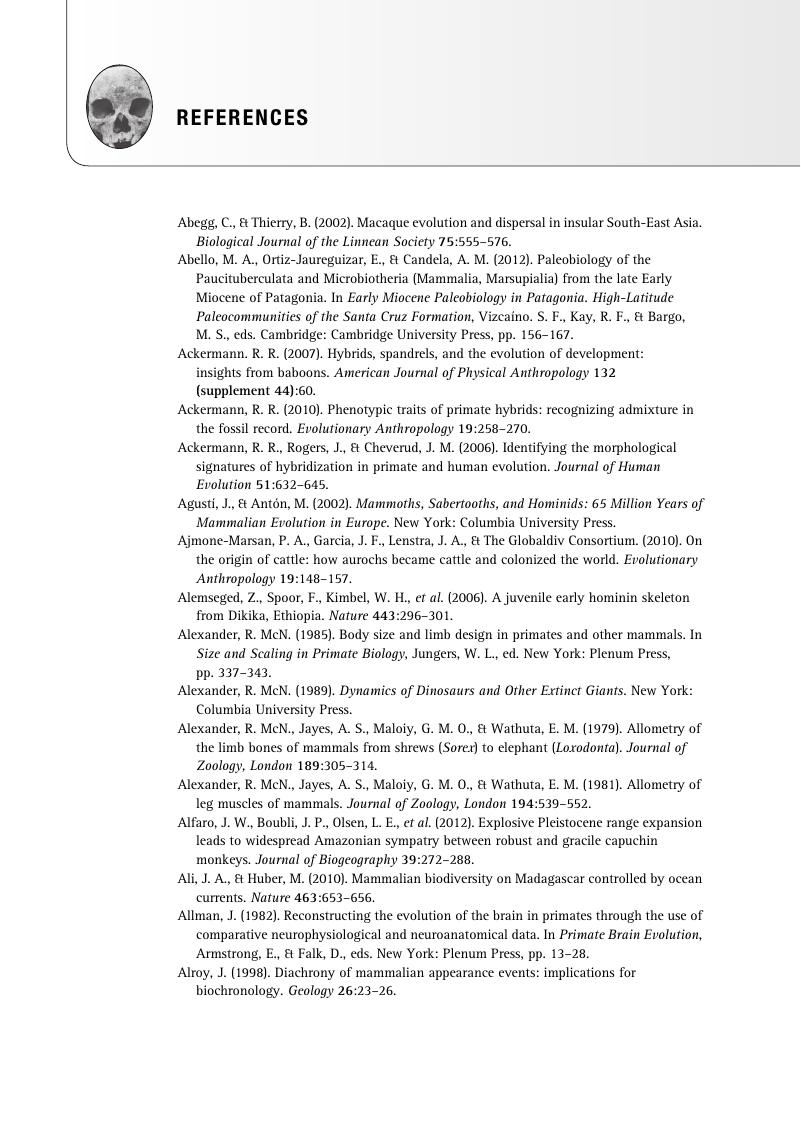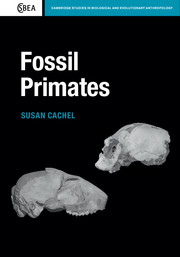Book contents
- Frontmatter
- Dedication
- Contents
- Acknowledgments
- Preface
- 1 Introduction: primates in evolutionary time
- 2 Primate taxonomy
- 3 Fossils and fossilization
- 4 The world of the past
- 5 The lifeways of extinct animals
- 6 Evolutionary processes and the pattern of primate evolution
- 7 Primate origins
- 8 The Paleocene primate radiation
- 9 The Eocene primate radiation
- 10 The Malagasy primate radiation
- 11 The Oligocene bottleneck
- 12 Rise of the anthropoids
- 13 The platyrrhine radiation
- 14 The Miocene hominoid radiation
- 15 The cercopithecoid radiation
- 16 Late Cenozoic climate changes
- 17 Conclusions
- References
- Index
- References
References
Published online by Cambridge University Press: 05 April 2015
- Frontmatter
- Dedication
- Contents
- Acknowledgments
- Preface
- 1 Introduction: primates in evolutionary time
- 2 Primate taxonomy
- 3 Fossils and fossilization
- 4 The world of the past
- 5 The lifeways of extinct animals
- 6 Evolutionary processes and the pattern of primate evolution
- 7 Primate origins
- 8 The Paleocene primate radiation
- 9 The Eocene primate radiation
- 10 The Malagasy primate radiation
- 11 The Oligocene bottleneck
- 12 Rise of the anthropoids
- 13 The platyrrhine radiation
- 14 The Miocene hominoid radiation
- 15 The cercopithecoid radiation
- 16 Late Cenozoic climate changes
- 17 Conclusions
- References
- Index
- References
Summary

- Type
- Chapter
- Information
- Fossil Primates , pp. 264 - 292Publisher: Cambridge University PressPrint publication year: 2015



